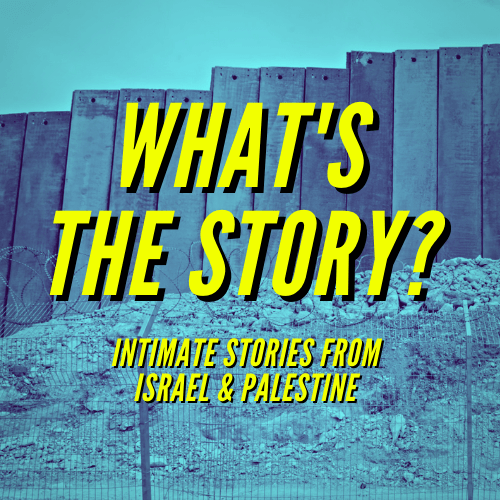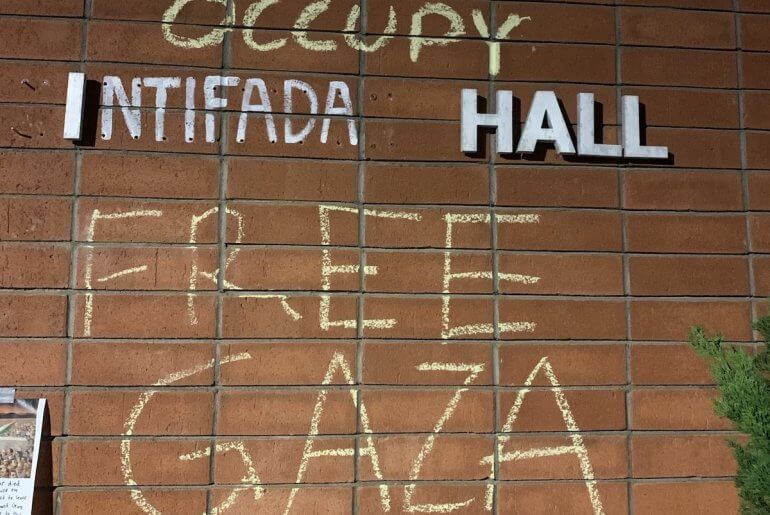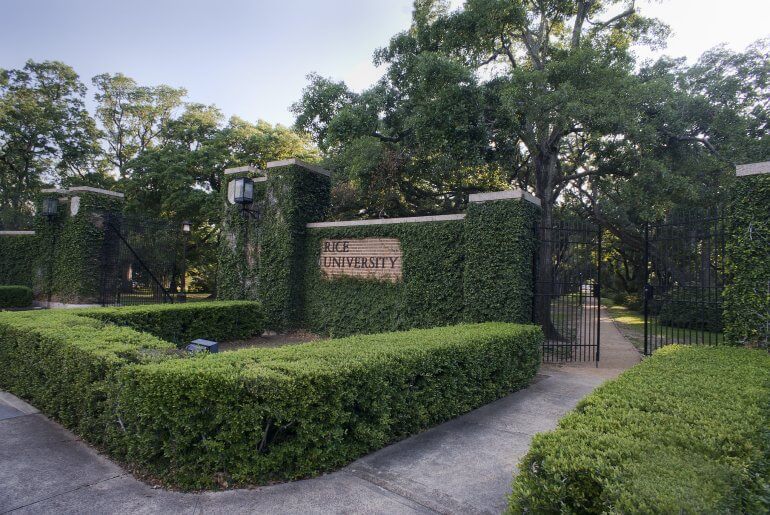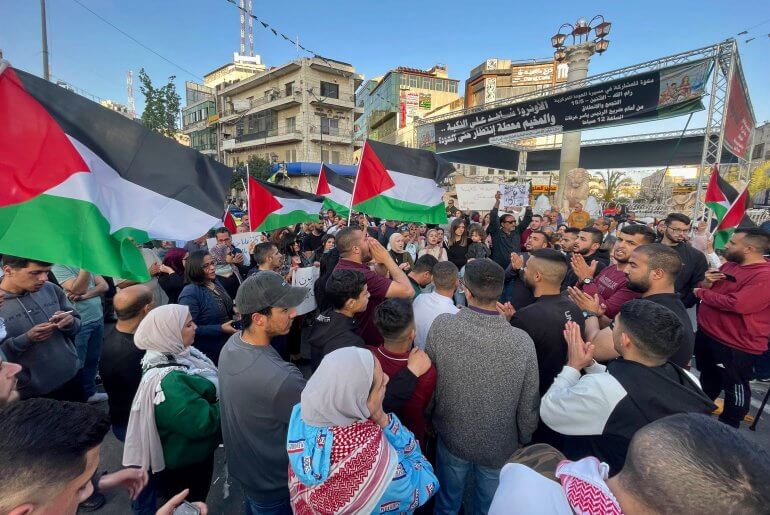
Yacoub Ahmad Odeh was eight years old when he was expelled from Lifta during the Palestinian Nakba of 1948. Today he lives in East Jerusalem, only a few kilometers from Lifta, but he is banned from living his home village by Israel. Still, over 70 years later, he is still determined to return to Lifta and is helping lead the fight against Israeli plans to turn Lifta into a Jewish neighborhood of West Jerusalem.
As told to producer/director Ghousoon Bisharat and cinematographer/editor Thomas Dallal.
Follow Mondoweiss’s coverage of Lifta here.
Shu al-Qusa/What’s the Story is a video series by Ghousoon Bisharat and Thomas Dallal that illuminates Palestinian life and politics through intimate first-person interviews with Palestinians. View the series here.
Ghousoon Bisharat
Ghousoon Bisharat is an experienced journalist and producer, as well as a strategic communications and international cooperation expert. She has more than 20 years of experience working with leading international broadcast news outlets and the European Union.
Thomas Dallal
Thomas Dallal is an award-winning photojournalist and cinematographer currently based in Haifa. His photographs have appeared in leading international newspapers and magazines thousands of times over three decades, including The New York Times and Der Spiegel among many others and his cinematography work has been broadcast by Aljazeera Documentary.



1 of 2
Re Lifta for the record:
EXCERPTS:
http://electronicintifada.net/v2/article3652.shtml
March 2,2005
“Ethnic Cleansing 101: The Case of Lifta Village”
EXCERPTS:
“The village of Lifta was once one of the largest & wealthiest communities in the Jerusalem region. The beauty of the old homes still standing upon the overgrown hillside pays tribute to that prosperous past. In fact, Lifta’s lands once covered 8,743 dunum (8.7 km2) & stretched from the hills west of Jerusalem right up to the gates of the old city itself. The population of the village in 1948 was approximately 2,550 (including 2,530 Muslim & 20 Christian Palestinians). Like most Palestinian villages, many of Lifta’s residents were dependent on agriculture & cultivated 3,000 dunums (3 km2) of land, including 1,500 olive trees.
“According to research compiled by Palestine Remembered, Lifta was originally a Canaanite village & during Biblical & Roman times it was known by the name Nephtoah. In the Byzantine period it was called Nephtho, & the Crusaders referred to Lifta as Clepsta. Before 1948, the village had been continuously inhabited for well over 2,000 years.
“In the years leading up to the 1948 war, however, the village fell under attack by Jewish militias operating in the area. On the 28th of December 1947, six people were gunned down in the village coffeehouse, by members of two Jewish militias, the Stern Gang (whose commander, Yitzhak Shamir, later became Prime Minister of Israel) & the Irgun (whose commander, Menachem Begin, also later served as Prime Minister of Israel).[3] Some of Lifta’s residents sold their property to European investors eager to acquire more land for Jewish settlement. Many more left early on. According to the descendents of the villagers, however, a significant number remained in Lifta into the first months of 1948.
“Lifta was harassed by Stern Gang & Irgun militants through December 1947 & January 1948. One of the refugees who returned to the village relayed the story he was told about the attack on Lifta: “In late January or early February, the Stern Gang & Irgun attacked & seized the neighboring village of Qaluba & then invaded Lifta from the West. (cont’d)
.
2 of 2
“They occupied Lifta’s new town & the remaining residents took refuge in the old town in the valley. The village was cut-off from the west & anyone trying to leave was killed. The villagers resisted but were defeated after 9 or 10 hours of fighting.
“By the time the entire village was occupied, most of the people had already left Lifta & fled into the West Bank, the rest were taken by truck & dumped in East Jerusalem. By February 1948, Lifta had been completely depopulated. The Stern Gang & Irgun occupied the houses & broke holes in the roofs to ensure that they would be uninhabitable if the residents attempted to return.
“The story of Lifta was repeated in numerous villages throughout Palestine in 1948. At least 418 villages were ethnically cleansed in the same way. In fact, the evacuation of Palestinian villages was a matter of policy for the Jewish fighting forces. Israeli historian Benny Morris explains that ‘in the months of April-May 1948, units of the Haganah [the predecessor to the Israeli Army]… were given operational orders that stated explicitly that they were to uproot the villagers, expel them & destroy the villages themselves.’
“Lifta, however, is unique in the fact that it was completely depopulated in February, at least two months before the war was in full-swing, & three months before Israel’s declaration of independence. In April of 1948, the Jewish forces were fighting several armies from newly independent Arab states. The Jewish settlers enjoyed substantive advantages in the war. “Aside from possessing newer weapons & technology, they also outnumbered their Arab counterparts by a margin of two to one. It was in this context that, the leader of the Jewish forces, David Ben-Gurion, commanded his fighters to ‘adopt the method of aggressive defense; with every Arab attack we must be prepared to respond with a decisive blow: the destruction of the [Arab] place or the expulsion of its residents along with the seizure of the place.”